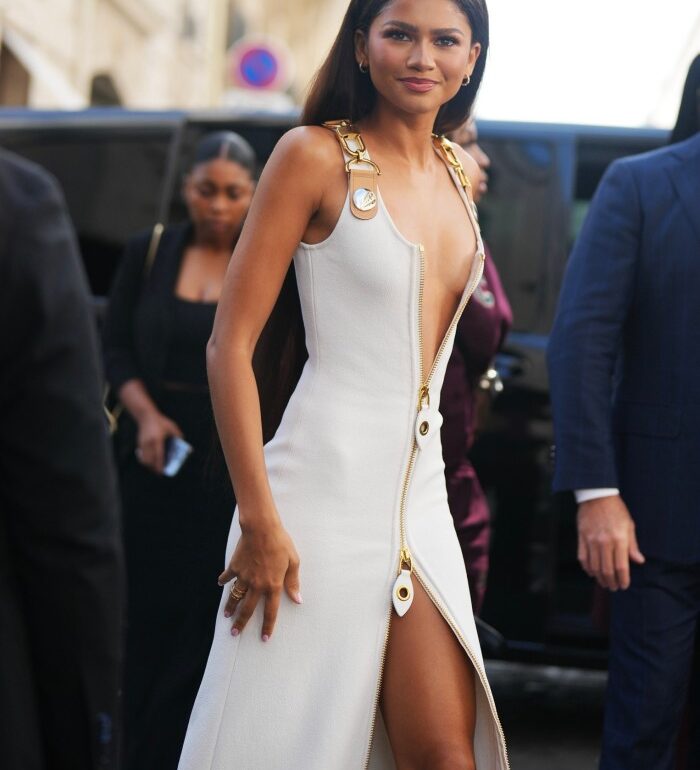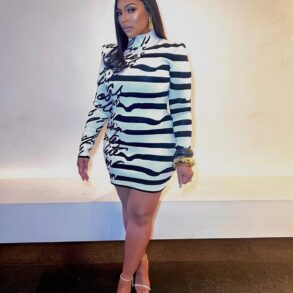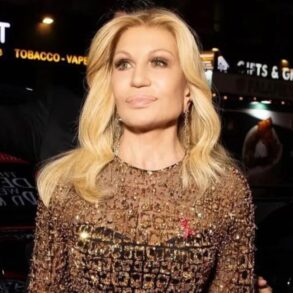A screaming crowd 20 people deep strained against barriers and spilled on to the road outside Louis Vuitton’s October runway show on Paris’s Champs-Élysées as movie star Zendaya walked the red carpet in a white zippered gown split to the navel.
“It’s like doing crowd control during Beatlemania,” a police officer grumbled to a colleague as he swatted away a Louis Vuitton handbag swinging from an animated woman’s wrist.
The LVMH-owned fashion house has been one of the biggest winners of the luxury boom that is now drawing to a close, doubling in size in the past five years to become the world’s first luxury brand to exceed €20bn in annual sales.
Against this more subdued economic backdrop, Vuitton’s chief executive Pietro Beccari — who was appointed from LVMH’s Christian Dior Couture in January — now faces the dual challenges of continuing to grow an already huge brand while maintaining its luxury cachet.
“Louis Vuitton is the leader of luxury so we have to keep on doing more and more, creating more and more desirability for the culture of the brand as well as the designs,” Beccari told the Financial Times at the October show.
Inside the cavernous venue — a building site for what will become one of Vuitton’s newest and biggest global location swathed in orange plastic sheeting for the occasion — LVMH executives and the family of billionaire owner Bernard Arnault mingled with stars and influencers. It was a show of force for the flagship house of Arnault’s sprawling luxury empire two weeks before third-quarter results showed that industry-wide growth was softening to a more normal historical pace after a three-year boom.
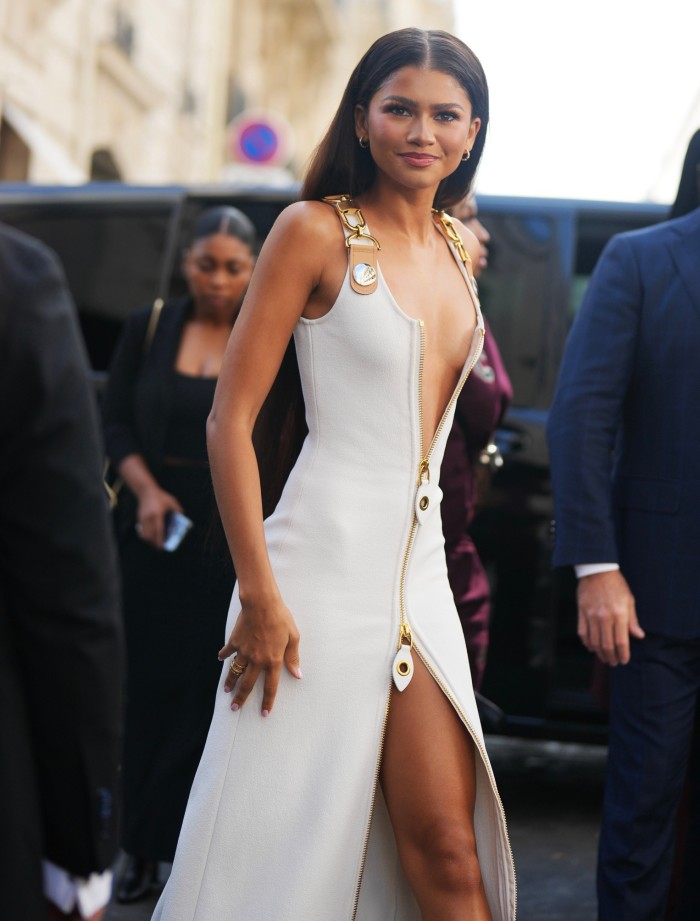
LVMH sales grew 9 per cent in the most recent quarter to €19.9bn, down from 17 per cent in the preceding three months. The group does not break out figures for individual brands, but analysts estimate Louis Vuitton tracks the trajectory of LVMH’s fashion and leather goods division where the pace of growth halved from 21 per cent in the second quarter to 9 per cent in the third.
But despite the change in pace, Louis Vuitton is still expected to be well on its way to the next milestone of €30bn in sales in the next few years, according to estimates from HSBC.
“At that size, every year they create the equivalent of a new company” in terms of growth, said Roberto Costa, head of global luxury investment banking at Citi. “It’s such a strong brand that it will continue growing.”
However, achieving that will take more work as aspirational customers in the US and Europe rein in spending and China’s recovery from last year’s Covid-19 lockdowns proves slower than expected. Louis Vuitton’s like-for-like sales in the US turned negative in the first three quarters of the year, according to HSBC estimates, but are expected to pick up towards the end of 2023.
Arnault’s thesis for how to continue growing Vuitton was set out at the group’s annual meeting at the start of 2022. “Louis Vuitton is much more than a fashion brand, it is a cultural brand with a global audience,” he said.
Erwan Rambourg, global head of consumer and retail research at HSBC, said: “When Arnault tells you Vuitton does not sell handbags but culture, he is basically telling you that as long as the brand equity is strong, there’s absolutely zero limit to what they could be selling tomorrow: hospitality, skincare, skateboards, whatever.”
The appointment of entertainer Pharrell Williams to design menswear earlier this year epitomised this strategy. Although his lack of design training was controversial in some fashion circles, his debut runway show on a floodlit bridge spanning the Seine was a promotional hit, garnering more than a billion views across video platforms — a record for the brand. Models were accompanied by a gospel choir and a live orchestra, and the event was rounded out with a performance by Williams and rapper Jay-Z.
Although menswear only accounts for about 5 per cent of Louis Vuitton’s sales, “that’s besides the point. The point is the halo effect” that comes with Williams, said Rambourg.
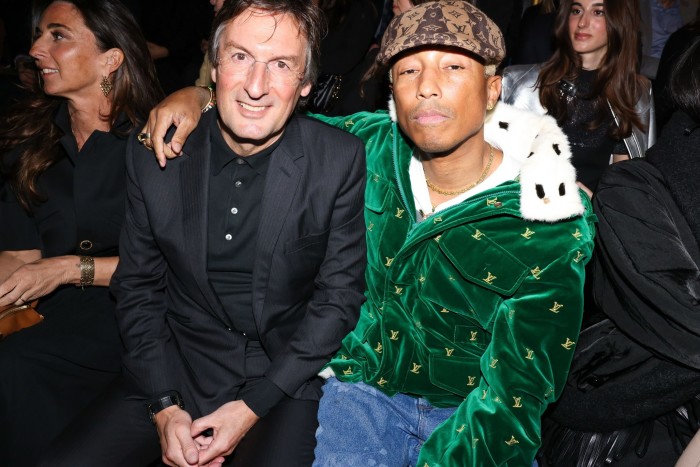



Industry experts expect Beccari to use enthusiasm for the brand to expand Louis Vuitton’s reach into new categories, just as he did successfully during his time at Dior, during which sales quadrupled to more than €8bn and margins more than doubled, according to estimates.
Expanding Vuitton’s limited offering in perfume and cosmetics is one area the company could tackle. Dior’s homeware and childrenswear lines are the top seller at London luxury department store Harrods, according to managing director Michael Ward, another field Beccari could look at.
Louis Vuitton’s construction on the Champs-Élysées is on the site of a former hotel, leading to speculation that the brand plans to open its first permanent hospitality location there. “The Louis Vuitton brand lends itself to experiential offerings: hotels, restaurants, maybe even travel itineraries,” said an executive at the group.
While Vuitton’s leather goods and menswear product offering has been strong, their womenswear is weaker, according to Ward. “For me the biggest thing is making sure they stay relevant in fashion and accessories, which is the key to their future,” Ward said. “LVMH is bringing in [Beccari] to do what he did with Dior, which was to create really fantastic fashion and apparel.”
Over the years, critics have fretted that Vuitton’s increasing size risked making it too mainstream to be considered luxurious and exclusive. The brand’s answer has been to develop tailored product lines and communication campaigns for different audiences.
The result is that “whether you’re a first-time 22-year-old purchaser or an uber-wealthy Hong Kongese tai-tai buying for the 25th year in a row, you’re getting the illusion that you’re the only one buying Vuitton”, said Rambourg.
Despite its strength and size, however, the brand will have to readjust to the new normal alongside the rest of the industry. The Stoxx Europe Luxury 10 index has fallen by about 20 per cent from historic highs in late April as signs of softening in the US spread to other markets, with LVMH shares falling in tandem from highs of more than €900 a share to about €661 today, giving it a market capitalisation of €334bn.
Brands such as Gucci and Balenciaga — owned by rival Kering —are selling “very poorly” this year but “Louis Vuitton has also not been great”, according to a buyer at a North American department store. “Anything that’s really dependent on logo or brand recognition is not doing well.”
LVMH is going through its annual budgeting process for all its companies, including Vuitton. Brand managers have been told not to present budgets with sales growth in excess of 10 per cent for next year, one analyst said. “They are clearly turning the screws on expenses.”
According to an executive in the luxury industry: “They are as data- and merchandising-driven as they come, so when people at Louis Vuitton start to say they are concerned [about the outlook], you listen.”
LVMH and Louis Vuitton declined to comment.
“If you can build something exceptional, you can cultivate a moment of magic that people will pay anything to be a part of,” the LVMH executive said.
On the street after the runway show, two American women at the back of the crowd strained to see over the melee as K-pop star Felix walked the rope line flanked by bodyguards.
“What is this about?” one shouted.
“I don’t know, but let’s get to the front,” her friend replied before plunging into the throng.
This post was originally published on this site be sure to check out more of their content.




